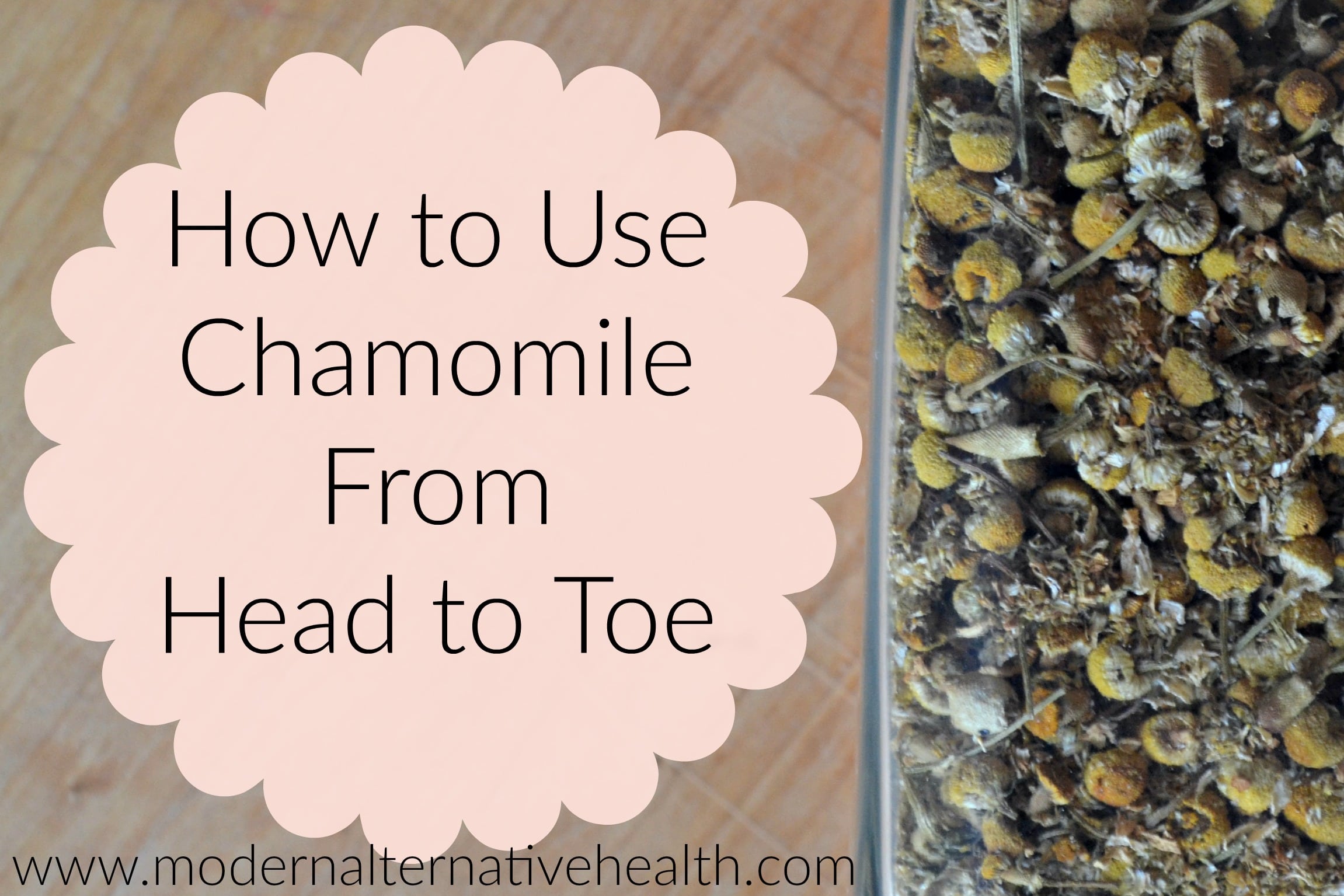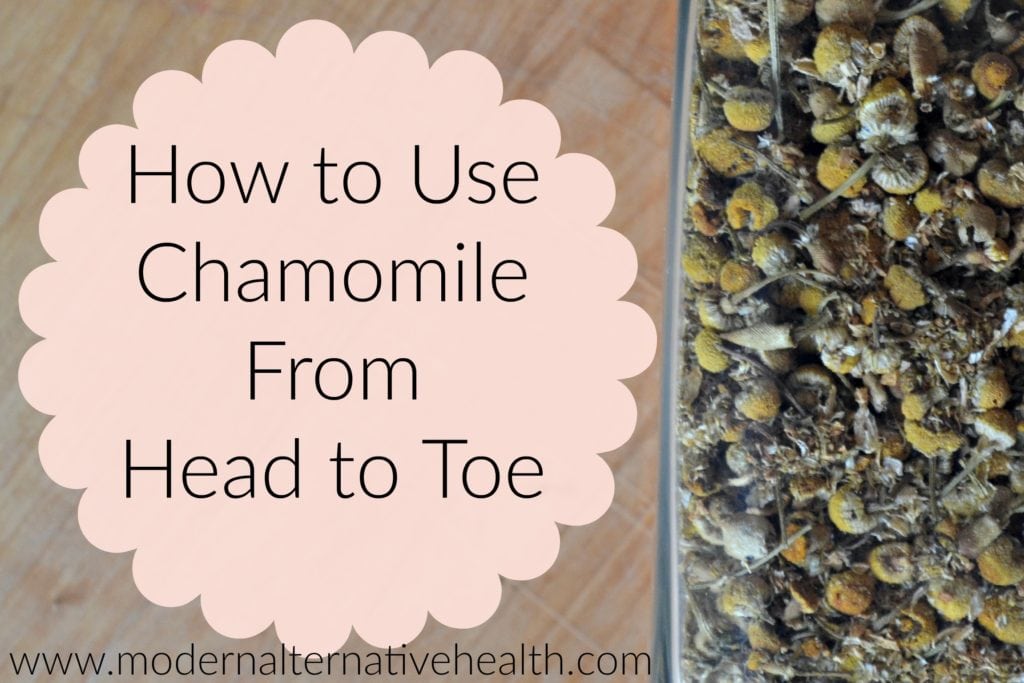
By Jacki May, Contributing writer
Chamomile (Matricaria recutita) is a time honored and popular herb for children and adults. It was Mama Rabbits go to herb for Peter after his hectic day in the beloved children’s story. But the benefits of Chamomile don’t stop at its effects on digestion or the nervous system. Come along as we cover several different ways to use Chamomile on the entire body.
Please note, when I mention the essential oil, I am referencing Chamamelum nobile. This is Roman chamomile but they are often interchanged. If you have any allergies to the Asteraceae or daisy family, please proceed with caution. Allergic reactions could occur.
How to Use Chamomile from Head to Toe
Hair
Chamomile, infused along with Calendula (Calendula offinalis), Yarrow (Achillea millefolium) and Rosemary (Rosmarinus officinalis). Using ¼ cup each, in raw apple cider vinegar makes a great hair rinse. Infuse for 4-6 week then strain.
To use: add about 4 ounces of hair rinse to a pint mason jar. Top the rest of the jar with water, then pour on hair. Allow to sit for couple minutes then rinse. This is great for those with dandruff as well!
Eyes
Chamomile works great for those with irritated eyes, including pink eye/conjunctivitis. There are two ways to use Chamomile for your eyes. You can make an herbal infusion (or tea) and use a cotton round or gauze pad to clean your eyes (from the center out) or place them over your eyes and let sit.
You can also use premade tea bags or use fill-your-own tea bags made ahead of time.
Ears
New ear piercing? You can use a chamomile tea bag to help with the healing of your ear.
Mouth
Chamomile is a long time trusted herb for teething pain. Brew up a cup of chamomile tea, soak a washcloth and let your little one chew on it. They can also drink the tea (or suck it off the washcloth) which can help calm the fussiness that often accompanies teething.
For those interested in homeopathy, Chamomilla is chamomile in homeopathic form and is also used for teething irritability.
Chest
Use the essential oil in a steam inhalation to help remove catarrh and inflammation. Adding other essential oils like Lavender (Lavendula angustifolia), Tea Tree (Melaleuca alternifolia), or Eucalyptus (Eucalyptus globulus) will work synergistically with each other to really kick your respiratory ailment to the curb.
*Eucalyptus globulus shouldn’t be used in children under the age of 2 and in very minute amounts for children under 6.
Stomach
As an antispasmodic and carminative, Chamomile can help to ease digestive upset. Take as a tea as needed. This is also soothing for those with gastric ulcers. You can also use the essential oil in a carrier oil as a topical application. Try this recipe for bloating:
- 5 drops Chamomile essential oil
- 5 drops Geranium (Pelargonium graveolens) essential oil
- 5 drops Lavender essential oil
- 5 drops Lemon (Citrus limonum) essential oil
- 5 drops Sandalwood (Santalum album) or Cedarwood Atlas (Cedrus atlantica) essential oil
- 4 ounces carrier oil, I love Sweet almond oil
Female reproductive system
Use Chamomile topically (see recipe above) or as a tea to enjoy the antispasmodic and nervine affects for cramps and other symptoms of premenstrual syndrome (PMS).

Skin
Chamomile is an anti-inflammatory herb and makes a wonderful herb (and essential oil) for taking care of your skin. One of my favorite ways is to indulge in a Chamomile milk bath.
- 1 cup powdered milk (3-4 cups if using fresh whole milk)
- 1 cup Epsom salts
- 10 drops Chamomile essential oil *add just before getting in
Suffering from hives (urticaria)? Chamomile tea can help with that by drinking 3 cups throughout the day for inflammation. Use the essential oil (in carrier oil) to help externally.
Legs
As an antispasmodic, Chamomile is a great herb to help relax those muscles. Create a strong infusion and add to a bath, along with some magnesium, or Epsom, salts. You could also use the essential oil in a carrier oil for topical application.
Feet
Achy feet? Relax with a Chamomile foot bath. This is also beneficial for those with infection on the foot especially when paired with Tea Tree essential oil. Of course, it is also wonderful for those with ingrown toenails.






